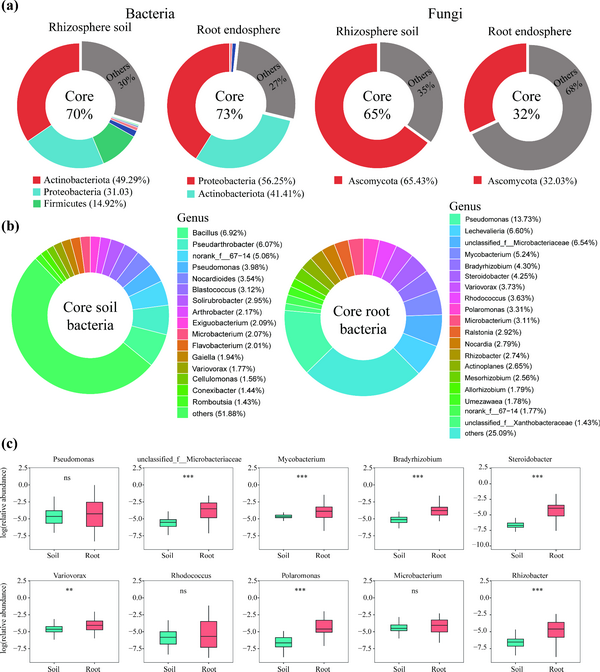Although it is well recognized that core root microorganisms contribute to plant health and productivity, little is known about their role to the accumulation of secondary metabolites. The roots of Anisodus tanguticus, a traditional herbal medication utilized by Tibetan medicine, are rich in tropane alkaloids. We collected wild A. tanguticus populations throughout a 1500 km transect on the Qinghai-Tibetan Plateau.
Our results showed that despite sampling at a distance of 1500 km, the root of A. tanguticus selectively recruits core root bacteria. We obtained 102 root bacterial core OTUs, and although their number only accounted for 2.99% of the total, their relative abundance accounted for 73% of the total. Spearman correlation and random forest analyses revealed that the composition of core root microbiomes was related to anisodine contents, aboveground biomass and nitrogen contents of Anisodus tanguticus. Among them, the main role is played by Rhizobacter,Variovorax, Polaromonas, and Mycobacterium genus that are significantly enriched in roots. Functional prediction by FAPROTAX showed that nitrogen-cycling microorganisms and pathogenic bacteria are strongly associated with anisodine contents, aboveground biomass and nitrogen contents of Anisodus tanguticus.
Our findings show that the root selectively recruits core root bacteria and revealed that the core microbiomes and microbial functions potentially contributed to the anisodine contents, aboveground biomass and nitrogen contents of the plant. This work may increase our understanding of the interactions between microorganisms and plants and improve our ability to manage root microbiota to promote sustainable production of herbal medicines.
The link below will guide you to the reading:https://doi.org/10.1186/s12870-023-04690-1

Core microbial composition of A.tanguticus. (a) Core microbial composition at phylum level. Numbers in parentheses indicate the proportion of relative abundance at phylum level. (b) Core bacterial composition at genus level. Numbers in parentheses indicate the proportion of relative abundance at genus level. (c) Differences in relative abundance between rhizosphere soil (soil) and root endosphere (root). Statistical significance was determined by the Wilcoxon rank-sum test. The significance levels are as follows: P<0.05, one asterisk (*); P<0.01, two asterisks (**); P<0.001, three asterisks (***)
